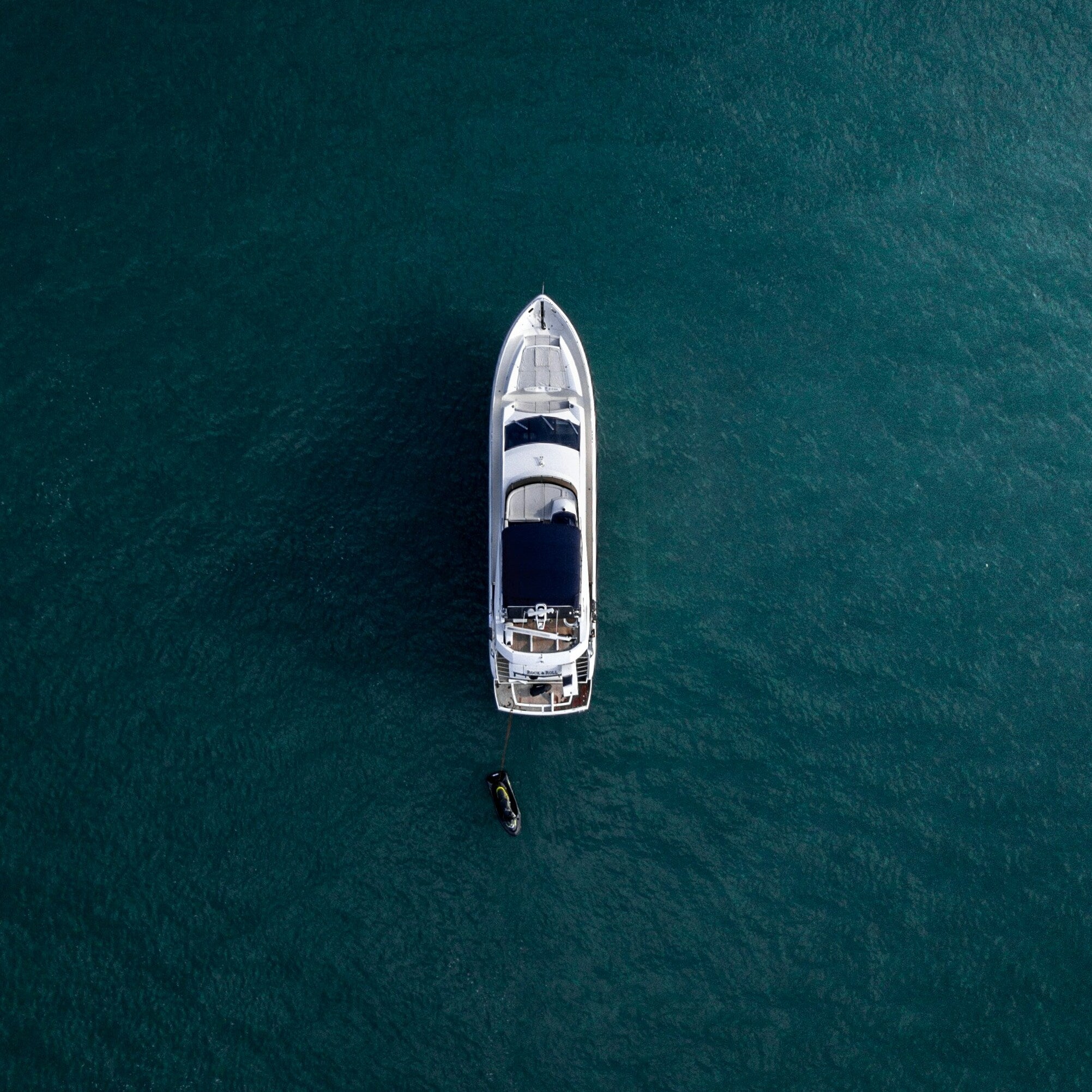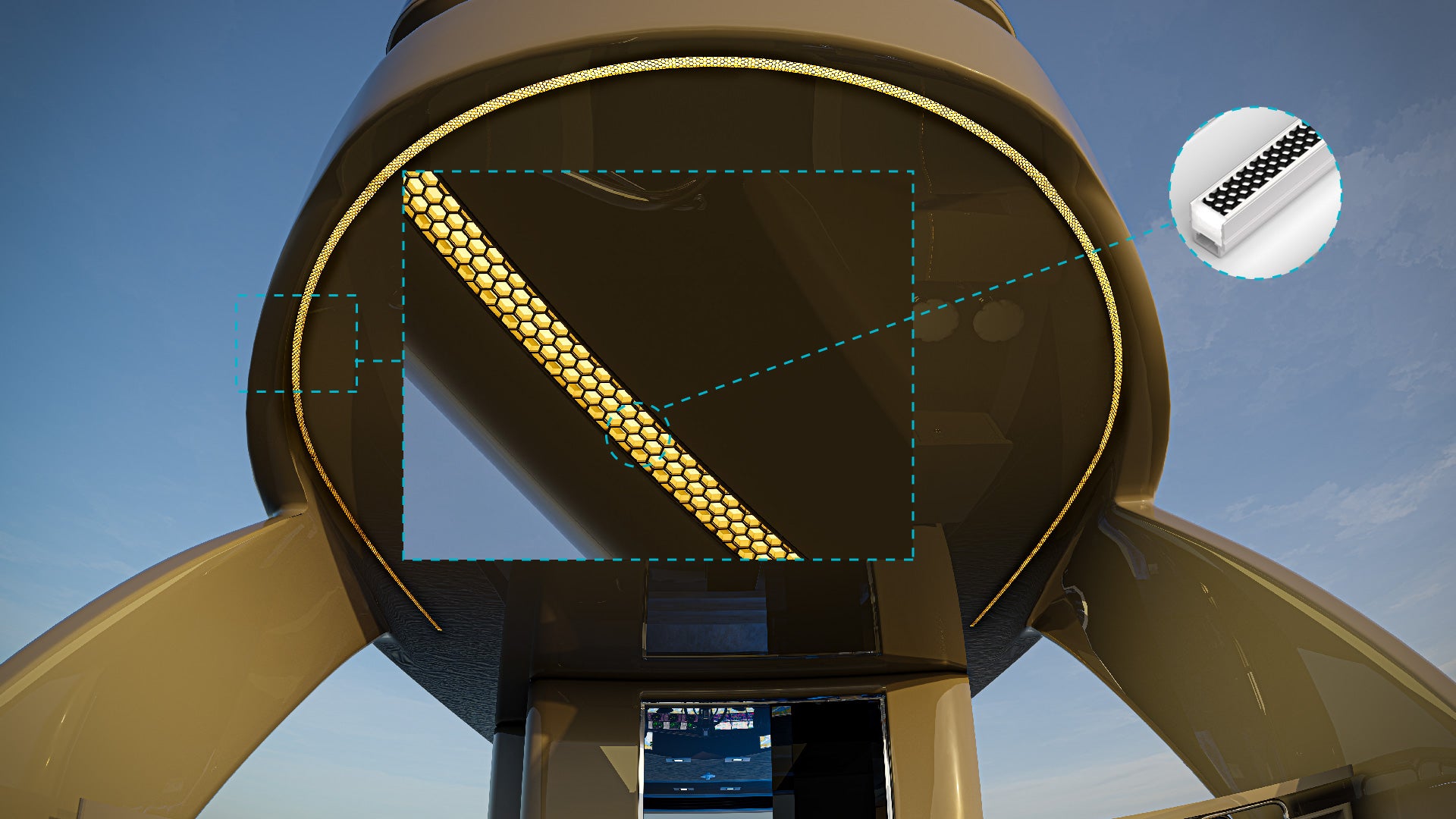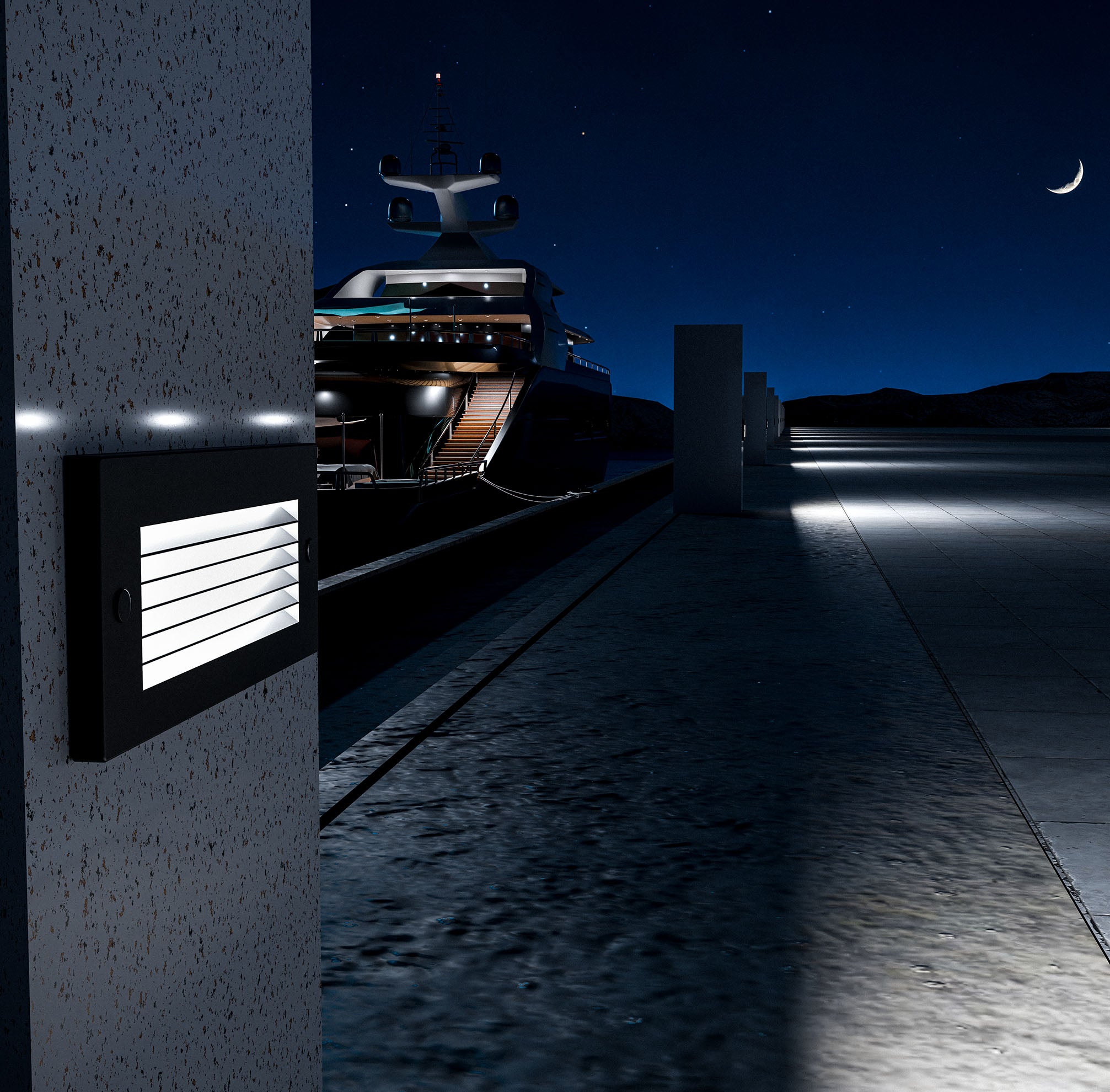When navigating the waters after sunset or preparing your vessel for nighttime activities, proper illumination becomes crucial for both safety and functionality. Among the various marine lighting options available, spreader lights stand out as one of the most versatile and essential lighting solutions for boat owners. But what exactly are spreader lights, and why have they become an indispensable component of modern marine lighting systems?
Understanding Spreader Lights: Definition and Purpose
Spreader lights are high-powered marine lights that originally earned their name from being mounted to the spreaders on sailboat masts. These are essentially wide-beam flood lights designed to illuminate large areas of your vessel's deck, cockpit, and surrounding waterline. Unlike focused spotlights that create narrow, intense beams, spreader lights are engineered to cast broad, even illumination across expansive areas.
Today's spreader lights function as versatile courtesy lighting that can be mounted virtually anywhere on your vessel where additional illumination is needed for safety and functionality. They point downward to effectively light decks, cabins, work areas, and any space requiring enhanced visibility during nighttime operations.
Key Applications and Uses
Primary Maritime Applications
Deck and Cockpit Illumination: The most common application involves mounting spreader lights on T-tops, hardtops, or other elevated structures to provide comprehensive deck lighting. This proves invaluable during docking procedures, equipment handling, and general deck maintenance.
Fishing Operations: Professional and commercial fishing boats extensively use spreader lights to extend their operational hours. The wide beam pattern illuminates bait preparation areas, fishing zones, and equipment storage spaces, making nighttime fishing both safer and more productive.
Anchoring and Mooring: When anchoring in unfamiliar waters or securing your vessel at night, spreader lights provide the visibility needed to handle lines, deploy anchors, and navigate around deck obstacles safely.
Emergency and Safety Lighting: During emergency situations, spreader lights serve as critical safety equipment, allowing crew members to locate safety gear, assess damage, or communicate with rescue vessels.
Recreational Applications
Water Sports and Swimming: Spreader lights create safe swimming environments around your vessel during evening hours, illuminating the water's surface for enhanced visibility and safety.
Social Gatherings: Evening entertainment becomes more enjoyable with proper deck illumination, allowing guests to move safely around the vessel while maintaining the ambiance.
Technical Specifications and Performance Characteristics
Beam Patterns and Coverage
Modern spreader lights typically feature beam angles ranging from 60° to 120°, with 120-degree beam spreads being particularly effective for evenly lighting cockpits, decks, and surrounding waterlines while preventing dark shadows or hot spots that could impair night vision.
Spot Beam (60°): At 35 feet mounting height, a 60° spot beam illuminates approximately a 40-foot diameter area, expanding to 52 feet at 45-foot mounting height and 64 feet at 55-foot mounting height.
Flood Beam (120°): Wide-angle scene beam patterns project light in broad, precisely controlled beams spanning 120 degrees, characterized by sharp-edged, square or rectangular light patterns.
Luminous Output and Efficiency
Contemporary LED spreader lights deliver impressive luminous output while maintaining energy efficiency:
- High-Performance Models: Premium 40W LED spreader lights can produce up to 5,200 lumens using four 10W CREE OSLON LX ECE LEDs.
- Compact Options: Smaller 3-inch spreader lights can generate 1,940 lumens per unit, with dual-light kits providing 3,880 total lumens.
- Energy Efficiency: LED spreader lights achieve approximately 100 lumens per watt compared to traditional incandescent sealed-beam lights that produce only 6.6 lumens per watt.
Power Consumption and Electrical Requirements
Most marine LED spreader lights operate on 9-36V DC systems, with typical 40W units drawing 3.2A at 12V DC. This broad voltage compatibility makes them suitable for various vessel electrical systems while maintaining consistent performance across different operating conditions.
Design Features and Construction
Environmental Protection
Marine environments demand robust construction standards. Quality spreader lights incorporate several protective features:
IP Rating Standards: IP67 rating provides ideal protection for spreader lights, ensuring extended protection from dust and waterproofing even when submerged in water up to 1 meter deep. Premium units may feature IP69K ratings for ultimate environmental protection.
Corrosion Resistance: Spreader lights utilize aluminum or fiberglass housing specifically designed for corrosion resistance, providing durability against marine environments and extending operational lifespan.
Advanced LED Technology
Heat Management: Professional-grade spreader lights incorporate specialized PCBA (Printed Circuit Board Assembly) designs with unique temperature protection, voltage protection, and current protection systems to maximize efficiency and increase durability.
Component Quality: High-end models utilize CREE LED chips manufactured in the USA, which provide low forward voltage, minimal heat generation, extended lifespan, and high ESD tolerance and resistance.
Pressure Equalization: Advanced designs include GORE-type vent membranes that equalize pressure while blocking water and contaminants, improving performance and service life.
Installation Considerations and Mounting Options
Mounting Configurations
Traditional Spreader Mounting: Classic installations use flat tab brackets mounted to the underside of spreaders using stainless screws or rivets, with bedding compound recommended to prevent corrosion from dissimilar metals.
Articulating Systems: Adjustable mounting systems feature spring-loaded ball and socket arrangements that allow precise light direction while maintaining position stability.
Flush-Mount Options: Modern designs include flush-mount configurations that enable direct installation onto unmodified hardtop surfaces without requiring additional mounting hardware.
Electrical Integration
Simplified Wiring: Contemporary spreader lights require only two conductors for operation, eliminating the need for messy low voltage signal cabling or external control modules.
Control Systems: Advanced models feature Time Toggled Protocol (TTP) with built-in dimming and color-changing capabilities, while non-TTP units can be controlled using deckhand dimmer modules and simple (ON)-OFF-(ON) boat rocker switches.
Advantages of Modern LED Spreader Lights
Energy Efficiency Benefits
LED spreader lights offer exceptional energy efficiency, consuming significantly less electricity than traditional incandescent or halogen alternatives, resulting in reduced energy costs and lower environmental impact. This efficiency prevents battery drain during extended use, making them ideal for situations where power conservation is essential.
Operational Advantages
Extended Coverage: Spreader lights project illumination over considerable distances while requiring minimal power compared to other marine lighting types, making them ideal when power limitations are a concern.
Durability: Solid-state LED construction provides superior resistance to shocks, vibrations, and external impacts compared to traditional bulbs, making them particularly suitable for marine applications where harsh weather conditions are common.
Maintenance Reduction: The extended lifespan of LED technology significantly reduces replacement frequency and maintenance costs.
Safety Enhancements
Heat Management: LED spreader lights emit minimal heat compared to traditional bulbs, reducing fire hazards and overheating risks, particularly important for fixtures mounted near combustible materials or in confined spaces.
Vision Preservation: Properly designed beam patterns prevent dark shadows and hot spots that could compromise night vision, crucial for safe nighttime operations.
Choosing the Right Spreader Light System
Performance Requirements
When selecting spreader lights, consider your specific operational needs:
Mounting Height: Higher installations require more focused beam patterns to maintain adequate ground-level illumination, while lower mounting points benefit from wider beam spreads.
Coverage Area: Calculate the required illumination area to determine appropriate lumen output and beam angle combinations.
Power Limitations: Consider that spreader lights may operate for extended periods, sometimes overnight, necessitating energy-efficient options that minimize battery drain.
Quality Indicators
Construction Materials: Look for 316 stainless steel hardware and DuPont marine-grade coatings for optimal corrosion resistance.
Certification Standards: Quality units should carry CE, RoHS, UV, vibration, RF anti-interference, and salt exposure certifications.
Warranty Coverage: Reputable manufacturers typically offer substantial warranty periods, with some providing lifetime coverage against manufacturing defects.
Future Considerations and Technology Trends
The marine lighting industry continues advancing with innovations in LED efficiency, smart control systems, and integration capabilities. Modern spreader lights increasingly feature wireless control options, smartphone integration, and enhanced dimming capabilities that provide precise illumination control for different operational scenarios.
As marine electrical systems become more sophisticated, spreader lights are evolving to integrate seamlessly with vessel management systems, offering automated operation based on ambient light conditions, vessel activity, or predetermined schedules.
Conclusion
Spreader lights represent an essential component of comprehensive marine lighting systems, providing versatile, efficient illumination for a wide range of nautical activities. From their origins as simple spreader-mounted deck lights, they have evolved into sophisticated LED systems offering superior performance, energy efficiency, and operational flexibility.
Whether you're a recreational boater seeking enhanced safety during nighttime activities or a commercial operator requiring reliable work lighting, understanding the capabilities and proper application of spreader lights ensures you can make informed decisions about your vessel's lighting needs. The combination of advanced LED technology, robust marine-grade construction, and thoughtful design makes modern spreader lights an invaluable investment in both safety and operational capability.
As you consider upgrading your vessel's lighting system, remember that quality spreader lights provide not just illumination, but peace of mind during your maritime adventures. The enhanced visibility, energy efficiency, and durability of contemporary LED spreader lights make them an essential upgrade for any serious mariner.




